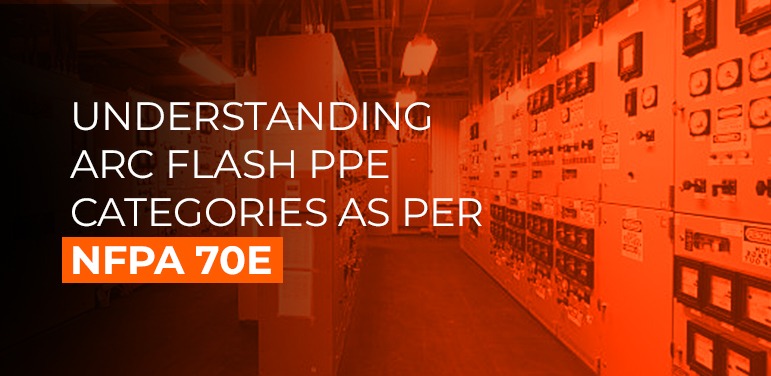Performance of risk assessment is pertinent before the commencement of any work. NFPA 70E: Standard for Electrical Safety in the Workplace sets out specific norms and regulations for the employer to ensure electrical safety and occupational health for the workers. Employee exposure to electrical hazards must be assessed and the subsequent risk control method must be identified and implemented.
The National Fire Protection Agency (NFPA) created NFPA 70E which has identified four FR hazardous risk categories. Prior to 2015, people took the Hazard Risk Category (HRC) calorie rating as the level of Personal Protective Equipment requisite for protection. The 2015 edition of the NFPA 70E revised the standard whereby the HRC levels became a way of determining the level of exposure during arc flash events that would, in turn, allow for the adequate selection of the correct PPE garment.
The risk levels range from 1 to 4.
HRC 1 signifies low risk while HRC 4 indicates the highest and most dangerous level of risk. The categories help determine the level of arc flash protective clothing that needs to be worn against a minimum level of incident energy.
Employers are required to assess the task risk and identify the appropriate level of protection required for the job.
| HAZARD RISK CATEGORY | REQUIRED MINIMUM ARC RATING OF PPE (cal / cm2) |
|---|---|
| PPE CAT 1 | 4 |
| PPE CAT 2 | 8 |
| PPE CAT 3 | 25 |
| PPE CAT 4 | 40 |
The more the calorie number, the greater is the energy level of the arc flash and the higher is the level of protection provided to the wearer.
About Cal Rating
When an arc flash takes place, incident energy is released. Although an arc flash lasts for less than a second, the absorption of the incident energy by the body during this event can cause severe damage including major burns. The water content in human body tissues becomes supremely heated by this exposure which facilitates the burn to become severe quite quickly. To avoid such incidents, the potential energy level of an arc flash occurring is measured and labeled in Calories per square centimeter (cal/cm²). This information is then attached to the respective instrument & PPE used on site. Hence, when the degree of hazard becomes known, one can easily proceed to select the most suitable PPE / clothing item for the protection of its employees.
ATPV and Ebt
The American Society for Testing and Materials (ASTM) standard defines Arc Thermal Performance Value or ATPV as the incident energy on a fabric material that results in sufficient heat transfer through the material to cause the onset of a second-degree burn based on the Stoll curve.
The ATPV value is an insulating value. This means that 8cal/cm² of incident energy will hold a 50% chance of causing burns when wearing an FR garment of the same arc rating. The fabric will safeguard unless exposed to levels of heat energy higher than the arc rating (ATPV).
Almost similar to ATPV, Ebt or Energy break open threshold is determined by the point at which the fabric breaks open right before the onset of a second-degree burn. FR clothing with an arc rating (Ebt) signifies that the garment will break open if exposed to the same amount of calories of heat but will not burn the wearer. However, if the incident energy is higher than the arc rating, the potential of extensive injuries will become higher.
Both ATPV and Ebt are evaluated under the same test but only one of the arc ratings can be assigned to a given fabric. According to ASTM F1506 specification, the lowest of the two values is to be given to the clothing label.
Final Note
Understanding the arc rating of FR clothing is of utmost importance. The arc rating helps employers and employees determine the amount of heat energy the fire-resistant garment will be able to block when exposed to an electric arc flash. Employees must be trained to understand the level of protection required for each task. To mitigate serious damages, workers must be aware of the ATPV and Ebt values on FR equipments as well.
Proper ASTM F1959 test methods must be followed to ensure a safe working environment.


Leave a Reply